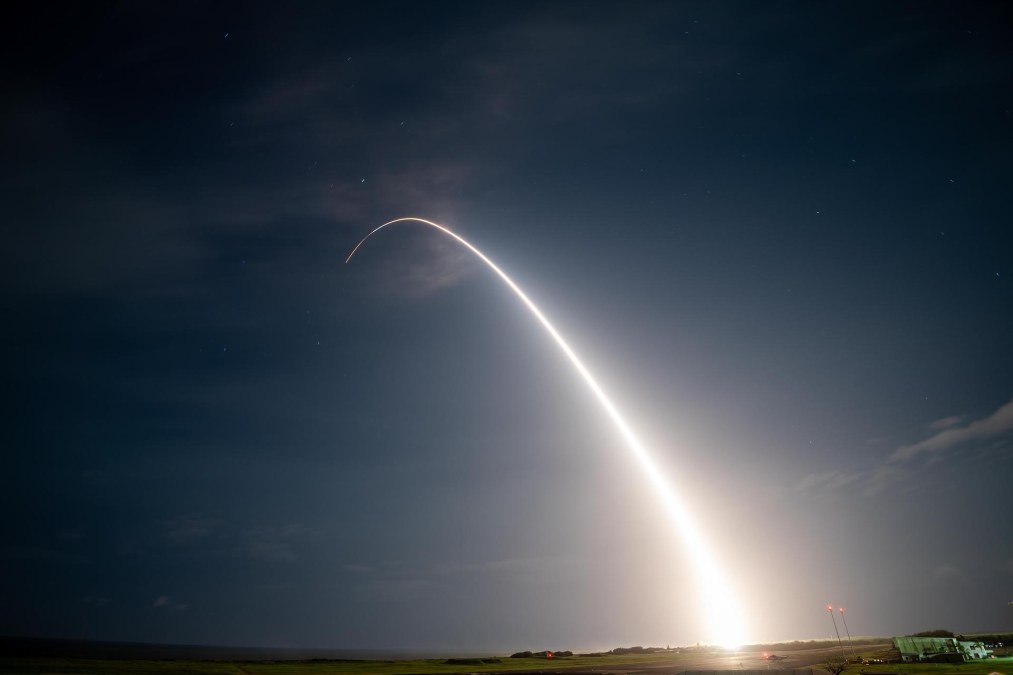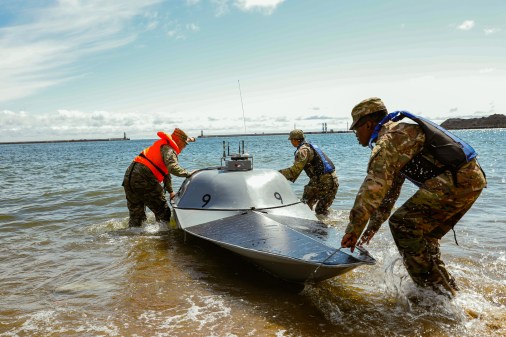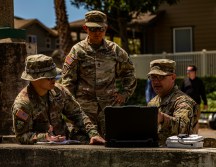Indo-Pacific Command to test prototype of Joint Fires Network this year

The U.S. military’s Indo-Pacific Command will be gearing up to demonstrate a prototype of its Joint Fires Network later this year, providing key data for an operational instantiation of the Pentagon’s top priority to better connect its systems and improve decision-making.
The Joint Fires Network is a prototyping effort that addresses the immediate needs of combatant commands while serving as a pathfinder for the broader Combined Joint All-Domain Command and Control (CJAD2) effort, which envisions how systems across the entire battlespace from all services and key international partners could be more effectively and holistically networked to provide the right data to commanders, faster.
The system will serve as a battle management platform and display real-time, fused, actionable threat information to joint and partner forces, according to fiscal 2025 budget documents recently released by the Department of Defense.
“Geographically dispersed commanders will share a common understanding of the battlespace simultaneously, fed by platform sensors that can provide targeting guidance to key weapons systems,” the documents state. “Coupled with the lethality of current and future munitions, joint force commanders will use JFN to underpin conventional deterrence and achieve decision advantage for combat success.”
Testifying before Congress this week, outgoing Indo-Pacom chief Adm. John Aquilino explained how he’s trying to leverage various efforts across the department to improve the command’s ability to hit enemy targets and deny their actions when discovered.
“The approach we’ve taken with the Joint Fires Network is to pull together a best-of-breed approach of Project Convergence from the Army, Overmatch from the Navy and Marine Corps and then ABMS from the Air Force along with the DARPA aspect of Assault Breaker II, to pull all those together and deliver a real near-time, best-of-breed solution to be able to command and control the joint force and ultimately close the kill chain,” he told the Senate Armed Services Committee Thursday. “The way we have articulated it and linked it with the building … is we’re going to provide some insights into the further development of CJADC2 as it goes forward.”
Assault Breaker II, modeled after the initial effort in 1978, aims to alter how the U.S. military thinks about designing, buying and deploying systems in the future using existing and emerging technologies across the services and commercial industry to address capability gaps. Budget documents note it’s critical to designing and fielding near-, mid- and far-term solutions to outpace adversaries.
Indo-Pacom asked Congress for an additional $122.7 million for the Joint Fires Network in its unfunded priorities list for fiscal 2025 to accelerate the development of the battle management system.
To some, these various service initiatives have raised concerns that the ultimate aim of the effort — true joint integration of systems, networks, sensors and weapons — will still be too stovepiped because they’re run by the services and not the combatant commands, which are charged with integrating the services’ capabilities in a joint fashion.
“The way that you have discussed the Joint Fires Network makes it sound like an actual joint solution to the problem set that the department has identified in which the JADC2 is supposed to solve … My question to you relates to my concern that each service is apparently designing its own approach to the Joint All-Domain Command and Control program. We’re talking air, land, sea, space and cyberspace. How and when do you see the department bringing all of these separate lines of effort together?” Sen. Mike Rounds, R-N.D., asked Aquilino.
“From the combatant command perspective, we don’t do anything in stovepipes. We fight as a joint force,” Aquilino quipped.
He added that the command has participated in the Global Information Dominance Experiments (GIDE) — run by the Chief Digital and AI Office to test, optimize and integrate the department’s data systems with artificial intelligence — and also pulled in efforts from Central Command and what European Command has done in support of Ukraine.
“We’re going to demonstrate the first version of that, of JFN, in Valiant Shield in [20]24,” Aquilino told the House Armed Services Committee Wednesday, telling senators a day later that it will provide useful insights for the Pentagon’s ongoing CJADC2 efforts.
“We think we’ll be informative, but ultimately, I’m going to produce a prototype, if you will, that will be demonstrated in our next big exercise this year, to see where we are, what we’re doing, is it right, is it at scale,” he said. “Our lens is this is a best of breed and a pretty good indicator on what we think the future should look like.”
Deputy Secretary of Defense Kathleen Hicks earlier this year announced a minimum viable product for CJADC2, but declined to offer details on what it is, where it’s deployed or what it does — citing classification concerns.






